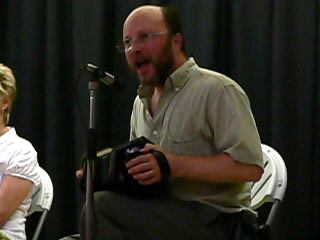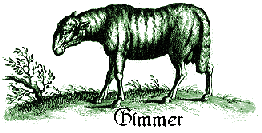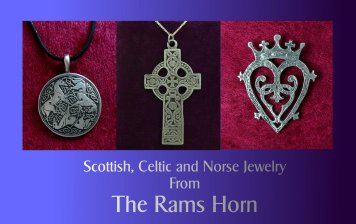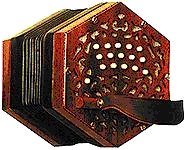
Concertina Page
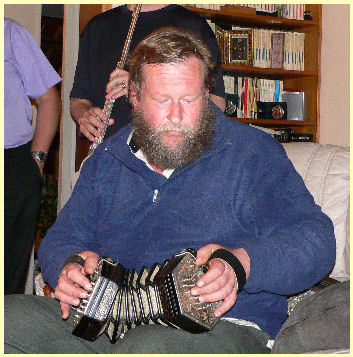
Dave Prebble

A concertina, like the various accordions, is a member of the free-reed family of instruments. It was invented in 1829 (with a patent for an improved version filed in 1844) by Sir Charles Wheatstone. Concertinas typically have buttons on both ends and are distinguished from an accordion (piano or button) by the direction of their button travel when pushed. Concertina buttons travel in the same direction as the bellows whereas accordion buttons travel perpendicular to the direction of the bellows.

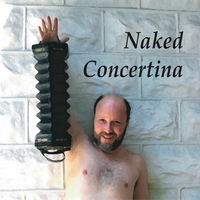

The name Concertina refers to a family of hand-held bellows-drive free reed instruments constructed according to various systems. The systems differ from one another:
in the notes and ranges available;
in the positioning of the keys (buttons);
in the sonoricity of the notes provided by the keys:
the keys of the bisonoric instruments produce differing notes on the press and on the draw;
the keys of the unisonoric instruments produce the same note on the press and on the draw;
in the ability to produce sound in both bellows directions:
single action, producing sound only in one bellows direction (usually found only on bass instruments);
double action, producing sound in both bellows directions;
in size and shape of the instrument and the technique required to hold the instrument.
To a player proficient in one of these systems, a concertina constructed according to a different system may be quite unfamiliar.
The most common concertina systems are listed below. The list is not exhaustive, as the concertina is not only a venerable and widespread instrument, but also an evolving instrument: modern experiments in concertina construction include chromatic scales offering more than 12 steps per octave, and instruments which allow the pitch of the notes to be sharped or flatted by the performer.

Anglo concertina
The Anglo concertina (from "Anglo-German") has buttons in curved rows following the fingertips. It is bisonoric: that, is pushing and pulling the bellows (press and draw) give two different notes from the same button, just as a harmonica (which the Anglo layout resembles quite closely) produces different notes on blow and draw, and allows comparatively dynamic play.
The heart of the Anglo system consist of two ten-button rows, each of which produces a diatonic major scale, much like the layout of notes on a harmonica. Five buttons of each row are on each side. The two rows are musically a fourth apart, e.g., if the row closest to the player's wrist is in the key of G, the next outer row will be in C. In modern times, a third row of helper notes has been added, consisting in part of accidentals omitted by the diatonic rows, and in part of notes which do exists in the diatonic rows, but in opposite bisonoric orientation to make certain chords possible and certain melodic passages easier. There is some small variation between makers and models in the layout of the notes in the core diatonic rows, and even more variation in the number and layout of the helper notes.
The Anglo concertina is typically held by placing the hands through a leather strap, with the thumbs outside of the strap and the palms resting on wooden bars. This arrangement leaves four fingers of each hand free for noting and the thumbs free to operate an air valve (for expanding or contracting the bellows without sounding a note) or a drone. The Anglo concertina is often associated with the music of Ireland. Instruments in the key of C/G are the ones used in traditional Irish music sessions, although it is used in other musical contexts as well, particularly in music for the English Morris dance.
George Jones is often credited as the inventor of the Anglo concertina. British builders active in the late nineteenth and early twentieth centuries include C. Jeffries (who built primarily Anglo-style concertinas) and Louis Lachenal (who built concertinas in both English and Anglo styles and was the most prolific manufacturer of the period).

English concertina
The English concertina is a fully chromatic instrument having buttons in a rectangular arrangement of four staggered rows, with the short side of the rectangle addressing the wrist. The invention of the instrument is credited to Sir Charles Wheatstone, his earliest patent of a like instrument granted 19 December 1829, No 5803 in Great Britain. The instrument is unisonoric, that is, press and draw on each button yield the same note. The two innermost rows of the layout constitute a diatonic C major scale, distributed alternatingly between the two sides of the instrument. (I.e., in a given range, C-E-G-B-d will be on one side, D-F-A-c-e on the other.) The two outer rows consist of the sharps and flats required to complete the chromatic scale. This distribution of scale notes between sides facilitates rapid melodic play (Rimsky-Korsakov's "Flight of the Bumblebee" was transcribed for English concertina early in the instrument's history), while to some extent rendering chords more difficult to learn than scales. Giulio Regondi was a virtuso performer and composer on this instrument as well as the guitar, and helped to popularize the instrument during the 19th century. Allan Atlas, in his book "The Wheatstone Concertina in Victorian England" identifies six known concertos written for this instrument. There are still many sonatas and other pieces that survive.
The English concertina is typically held by placing the thumbs through thumb straps and the little fingers on metal finger rests, leaving three fingers free for noting; alternately, both the ring and pinkie fingers support the metal finger rest, leaving two fingers for noting. In the classical style of Regondi, the little finger is used as well as the other three fingers and the metal finger rests are used only very occasionally. This allows all eight fingers to simultaneously play the instrument so large chords are possible. In pieces such as the Bernard Molique "Concerto No 1 in G for concertina and orchestra", or Percy Grainger's "Shepherd's Hey", four, five and six note chords are not uncommon, and would be difficult or impossible to play without using all the fingers.
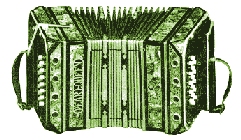
In Loving Memory of
Pete
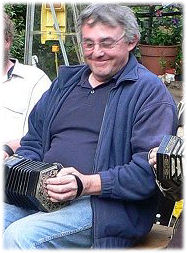

No part of this website may be used for any purpose ( including using images )
without written consent from The Rams Horn
